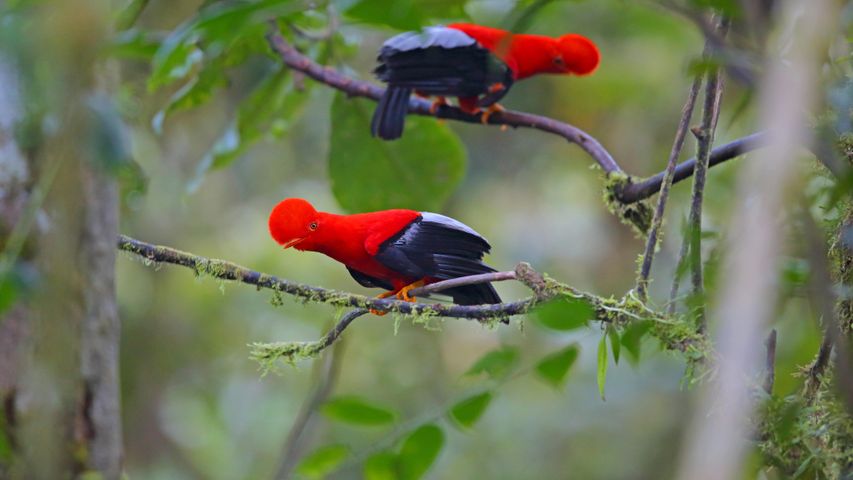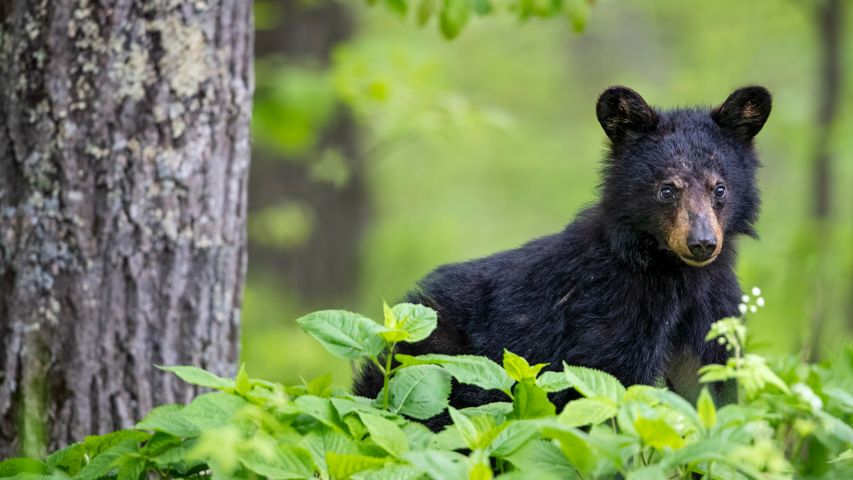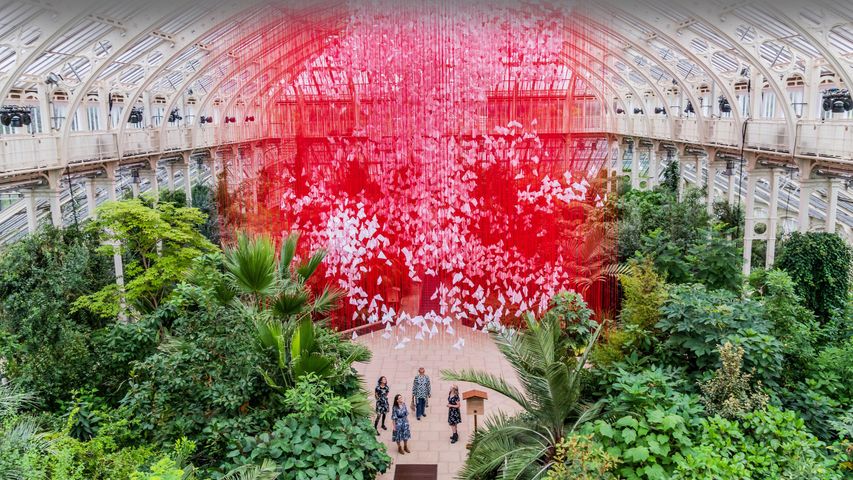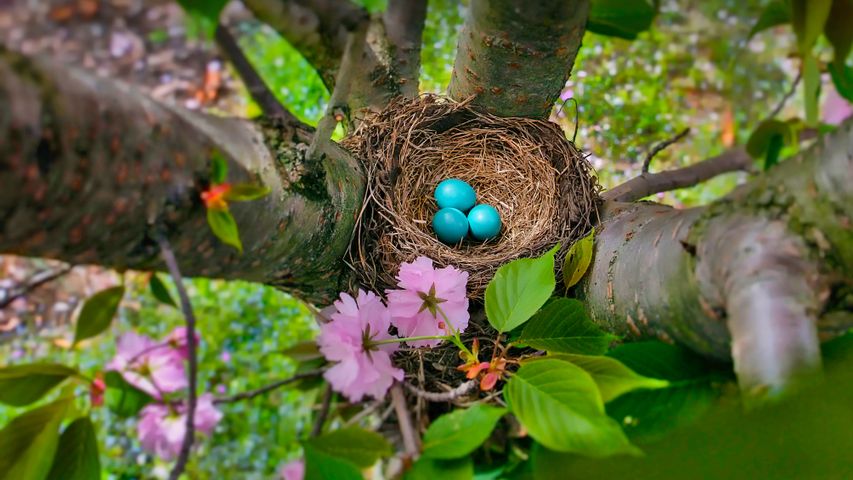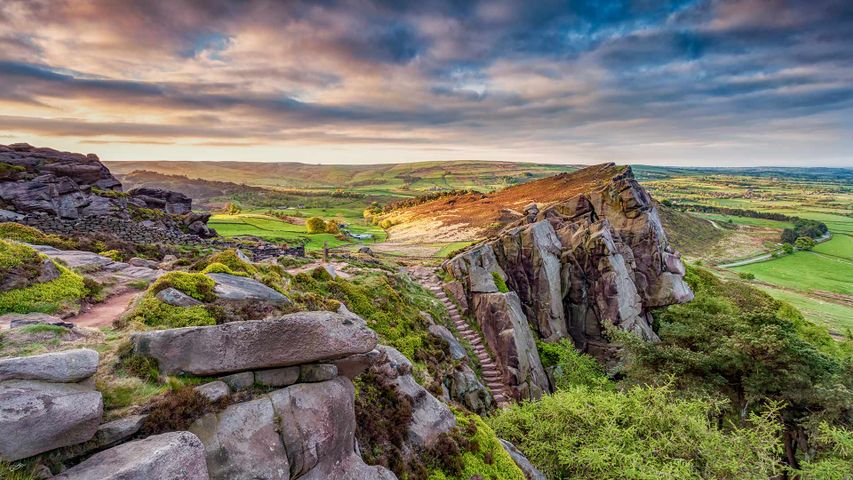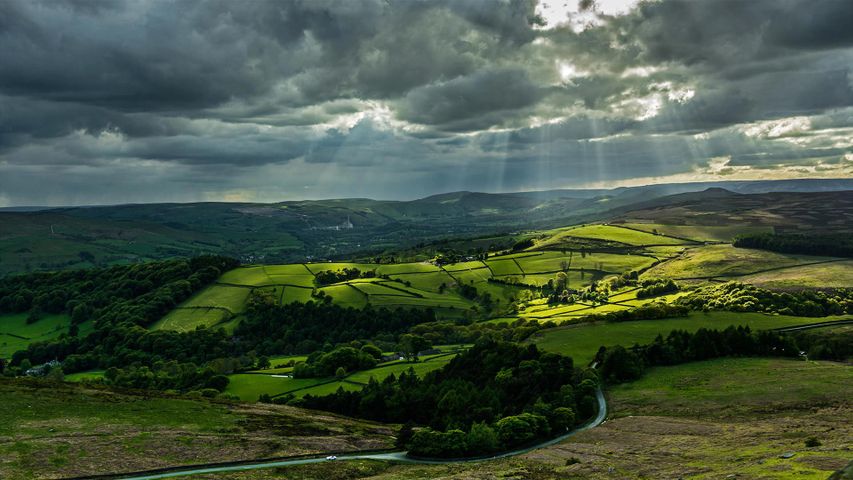Bluebells in Micheldever Wood, Hampshire
© Hursley/Getty Images Plu
Bluebell haze. Forest floors spring to life
The sweet scent of wild bluebells wafts through Micheldever Wood, in Hampshire, at this time of year. This ancient wood, largely made up of beech trees, offers the perfect leafy cover for the native Hyacinthoides Non-scripta, as they thrive in the dappled shade on the forest floor. Bluebells are great for woodlands’ ecosystems, attracting pollinators like bees and butterflies but they are delicate and take a while to get established – so watch where you step and don’t go picking them, native wild bluebells are protected by law.
Can you tell the difference between them and the invasive Hyacinthoides hispanica, the Spanish bluebell, which was introduced to the UK in the late 17th Century? The native version’s flowers are narrow with straight sides and mostly appear on one side of the droopy stem. The Spanish variety tend to have cone shaped flowers, straight stems and flowers all the way around. And you can sniff out a native bluebell while the Spanish one has little to no smell.
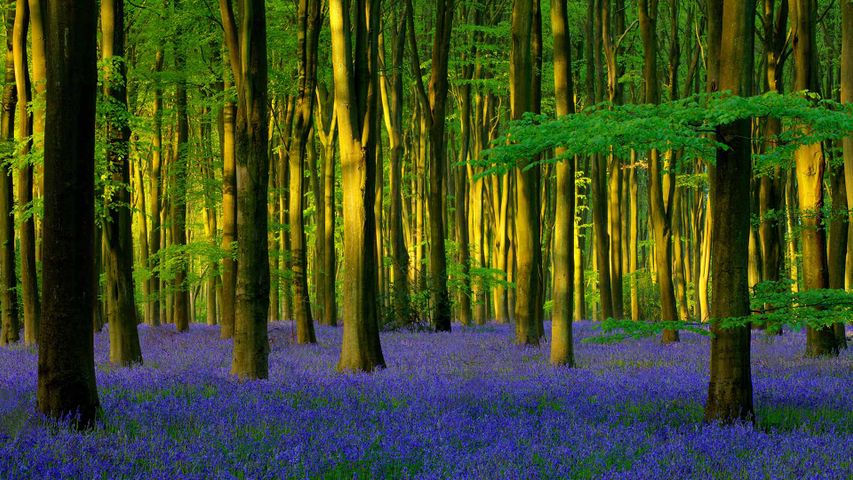
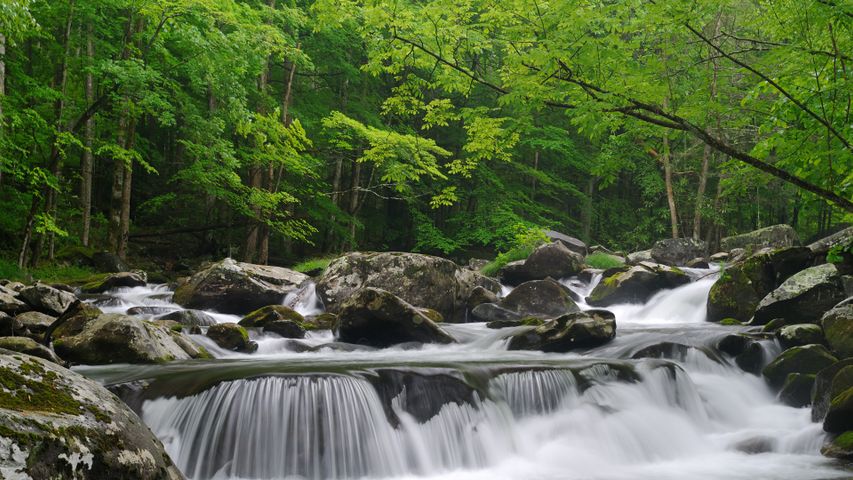 Little Pigeon River, Great Smoky Mountains National Park, Tennessee, United States
Little Pigeon River, Great Smoky Mountains National Park, Tennessee, United States
 Taktsang Palphug Monastery, Bhutan
Taktsang Palphug Monastery, Bhutan
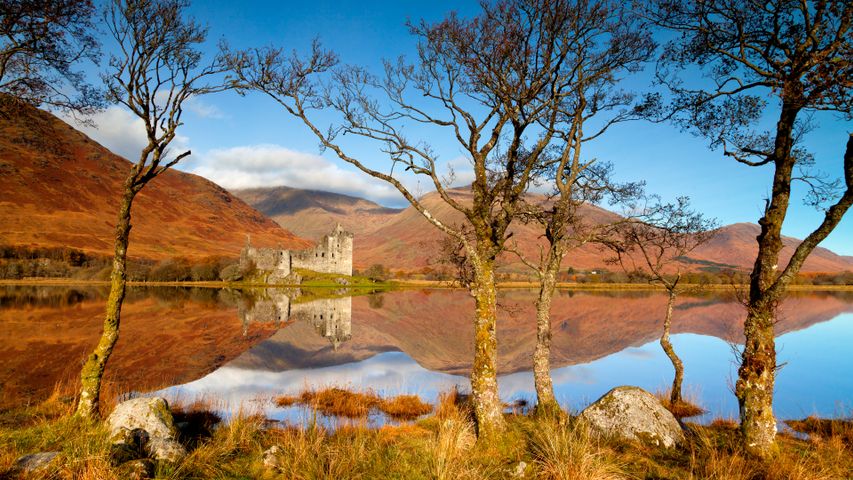 Kilchurn Castle reflecting in Loch Awe, Argyll and Bute, Scotland
Kilchurn Castle reflecting in Loch Awe, Argyll and Bute, Scotland
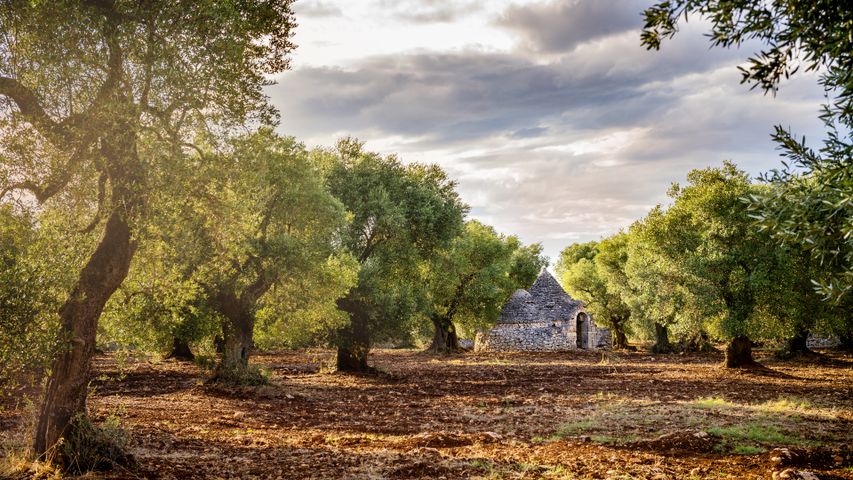 Olive grove, Valle d'Itria, Puglia, Italy
Olive grove, Valle d'Itria, Puglia, Italy
 Red deer stag in Caledonian Forest, Glen Affric, Scottish Highlands
Red deer stag in Caledonian Forest, Glen Affric, Scottish Highlands
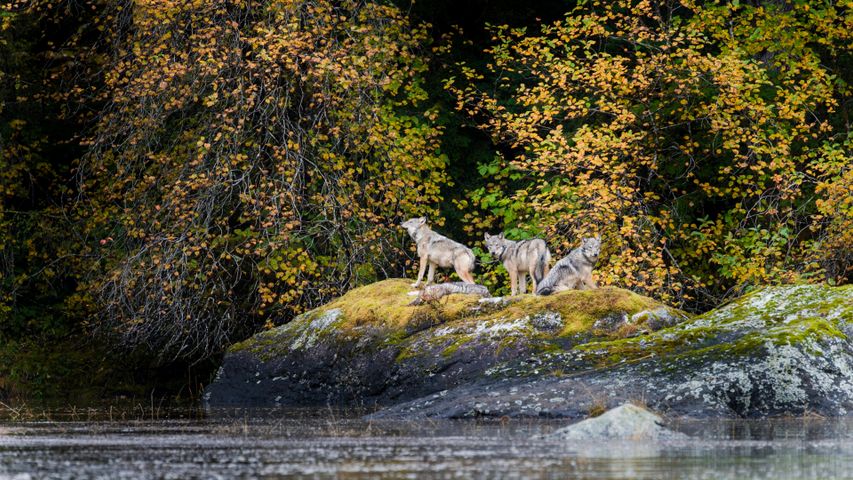 Vancouver Coastal Sea wolves in Great Bear Rainforest, British Columbia, Canada
Vancouver Coastal Sea wolves in Great Bear Rainforest, British Columbia, Canada
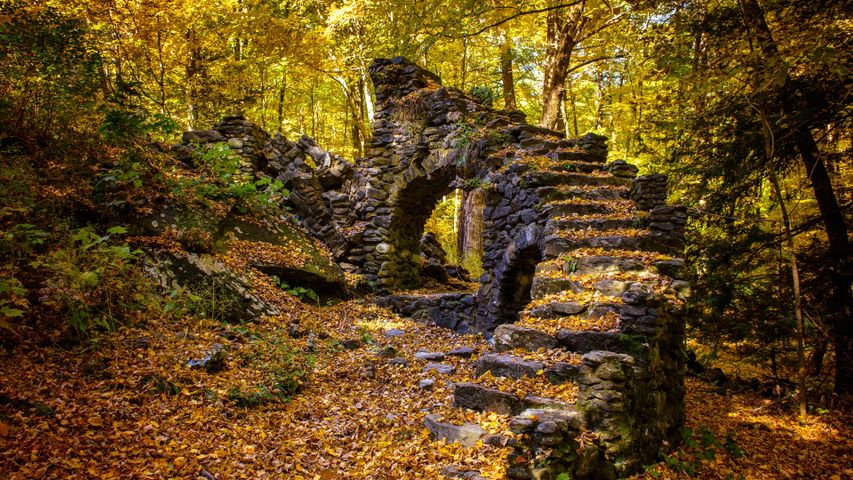 Madame Sherri Forest and the remnant of an old castle, New Hampshire, USA
Madame Sherri Forest and the remnant of an old castle, New Hampshire, USA
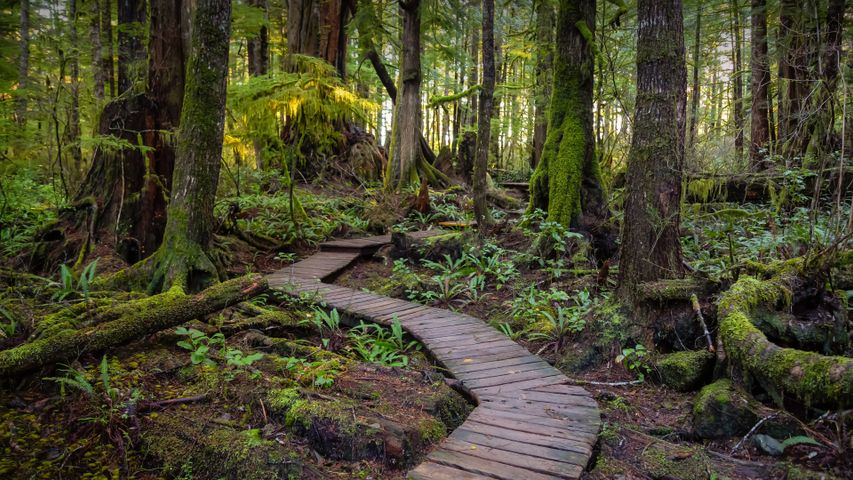 Wooden path to Kennedy Lake, Vancouver Island, BC, Canada
Wooden path to Kennedy Lake, Vancouver Island, BC, Canada
